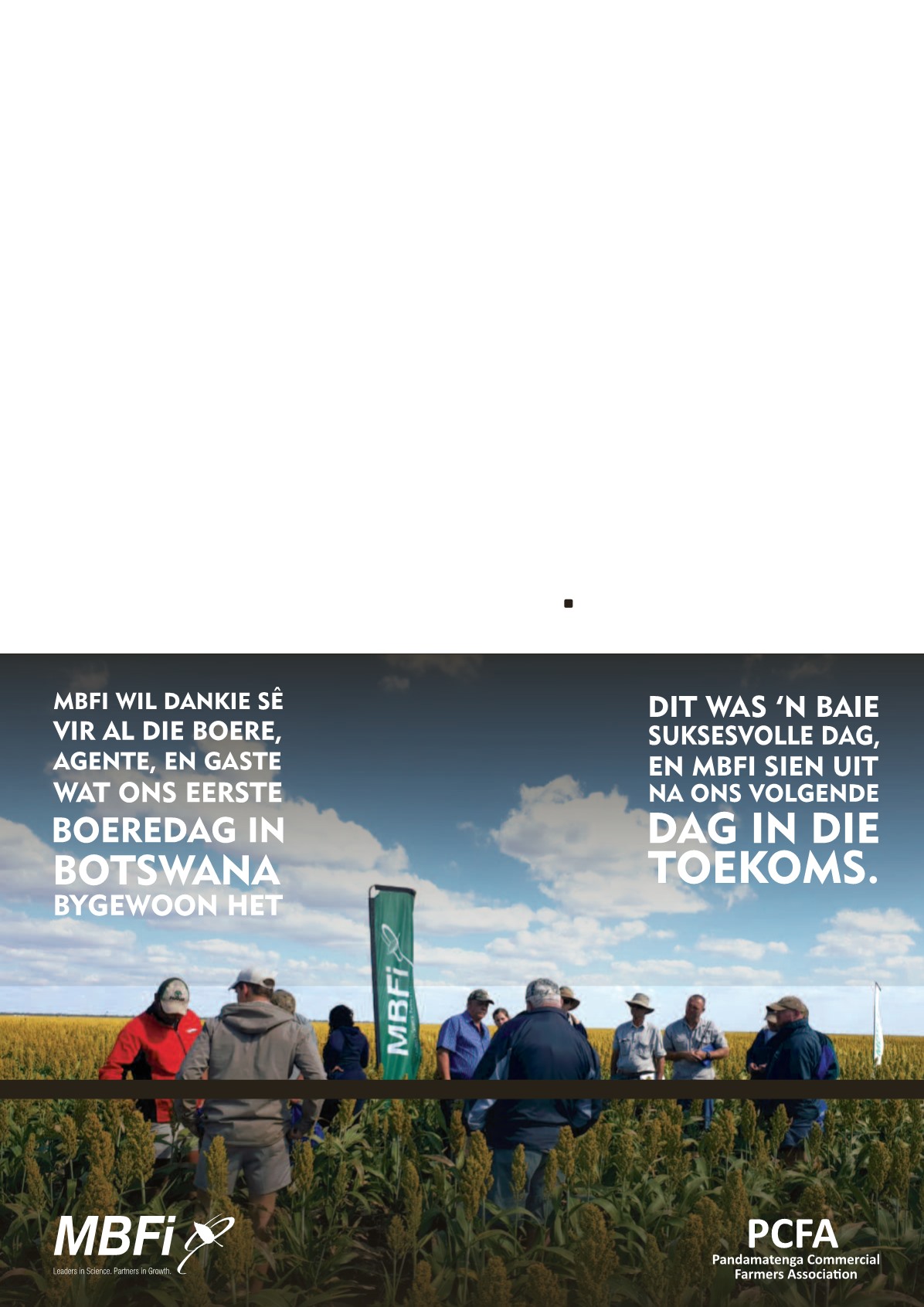

The cultivar samples for these annual evaluations are collected
from cultivar trials conducted by Grain SA, the ARC and commercial
breeding companies such as Pannar Seed, K2 Agri and Agricol.
Included in the range of quality analyses parameters is the evalu-
ation of sorghum cultivars for decortication efficiency related to
industrial performance. Because of the inherent size variation of
whole seeds even within the same cultivar, sorghum kernel sizes
are measured using image analyses which gives more detailed data
than rigid sieve tests.
In tests done at SAGL on sorghum cultivars since the 2013/2014
season, whole seed wet chemistry protein varied between 7,4% and
14,5%, wet chemistry starch varied between 63% and 75,5%, and
hectolitre mass varied between 69,7 kg/hl and 82,6 kg/hl (kern). De-
corticated sorghum product yield (coarse mabele type meal) above
the 2,38 mm sieve varied between 61,2% and 94,9% (m/m).
Based on the results of the quality analyses on cultivar samples,
the need was identified to conduct similar analyses on commercially
produced grain sorghum collected from silos or from farms with
the aim to accumulate quality data on the commercial crop on a
national level.
These surveys will be similar to the National Crop Quality surveys
already in place for maize, wheat, sunflower and soybeans. Com
mercial samples are often mixed in terms of cultivars and the en-
vironment and climate conditions on the farms will influence the
processing and nutritional quality of the sorghum grain.
Both commercial crop samples and imported grain sorghum will
be tested for quality using the same range of analyses performed
on the cultivar samples and in addition, a full grain sorghum grad-
ing and multi-mycotoxin testing will also be conducted. Mycotoxin
analyses with the SAGL’s ISO 17025 accredited UPLC-MS/MS meth-
od will be included to address the limited available information on
the occurrence and levels of mycotoxin on commercially produced
grain sorghum in South Africa. The presence of 13 different myco-
toxins namely Aflatoxin B
1
, B
2
, G
1
, and G
2
, Ochratoxin A, Fumonisin
B
1
, B
2
and B
3
, T2- toxin, H-T2 toxin, Zearalenone, Deoxynivalenol
and 5-acetyl deoxynivalenol will be reported.
Since the same analyses will be performed on imported grain
sorghum and the locally produced crop, the industry will be able
to compare locally produced quality with that of imported grain
sorghum. The South African Grain Information Service (SAGIS)
information indicates that South Africa imported more than
55 000 tons of sorghum during 2017/2018, mainly from the United
States of America.
This annual crop quality survey will be conducted on a relatively
small scale when compared to the national crop quality surveys
conducted on maize, wheat, sunflower and soybeans, but the
intention is to expand the size of the survey as the production vol-
umes increase.
















